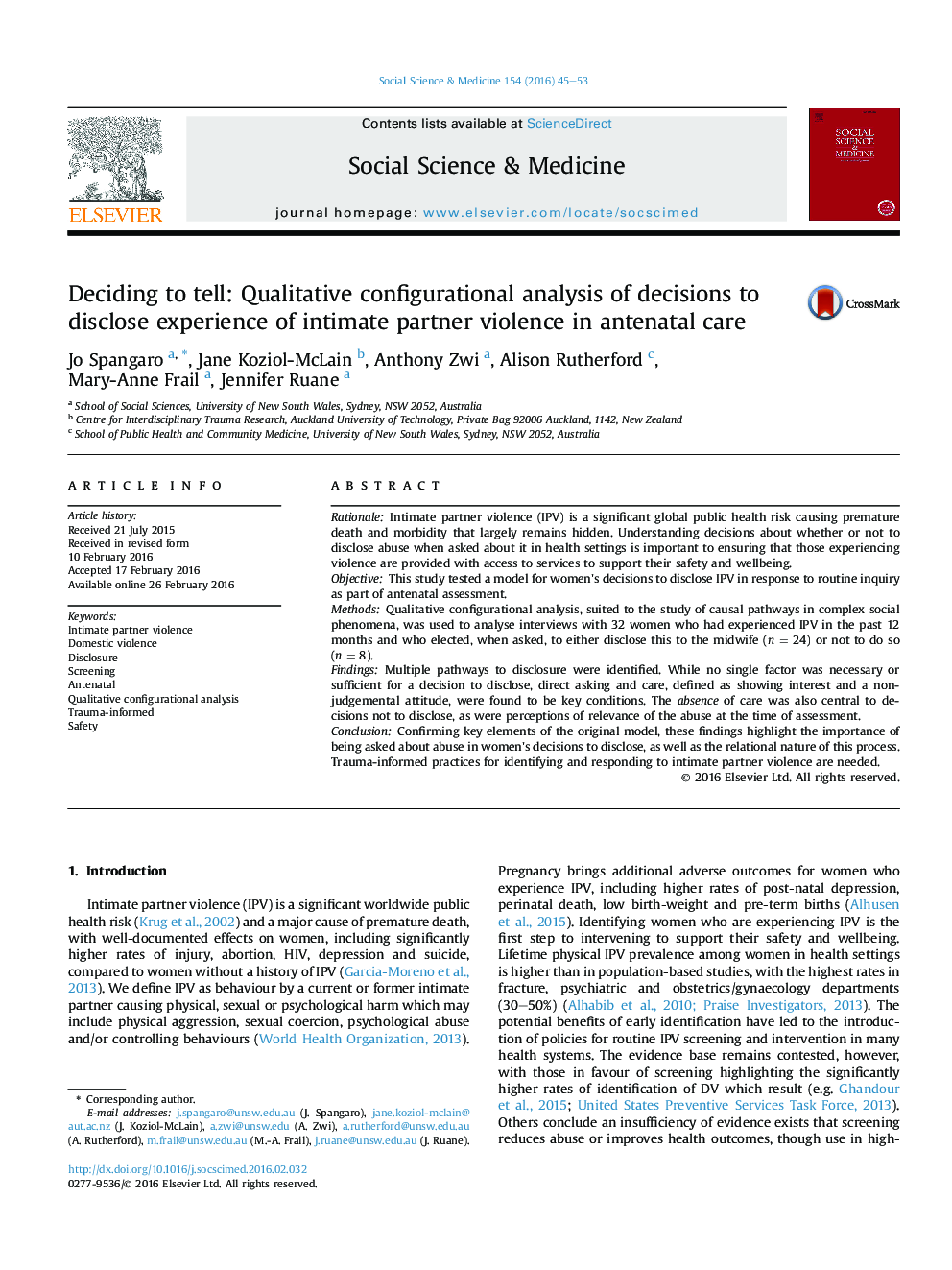| Article ID | Journal | Published Year | Pages | File Type |
|---|---|---|---|---|
| 952219 | Social Science & Medicine | 2016 | 9 Pages |
•Pathways to disclosure and non-disclosure of abuse by antenatal patients were identified.•Key conditions for decisions to disclose abuse were Direct Asking and Care.•For women deciding about disclosing abuse the concept of safety is multi-dimensional.•Qualitative configurational analysis showed promise in studying abuse disclosure.
RationaleIntimate partner violence (IPV) is a significant global public health risk causing premature death and morbidity that largely remains hidden. Understanding decisions about whether or not to disclose abuse when asked about it in health settings is important to ensuring that those experiencing violence are provided with access to services to support their safety and wellbeing.ObjectiveThis study tested a model for women's decisions to disclose IPV in response to routine inquiry as part of antenatal assessment.MethodsQualitative configurational analysis, suited to the study of causal pathways in complex social phenomena, was used to analyse interviews with 32 women who had experienced IPV in the past 12 months and who elected, when asked, to either disclose this to the midwife (n = 24) or not to do so (n = 8).FindingsMultiple pathways to disclosure were identified. While no single factor was necessary or sufficient for a decision to disclose, direct asking and care, defined as showing interest and a non-judgemental attitude, were found to be key conditions. The absence of care was also central to decisions not to disclose, as were perceptions of relevance of the abuse at the time of assessment.ConclusionConfirming key elements of the original model, these findings highlight the importance of being asked about abuse in women's decisions to disclose, as well as the relational nature of this process. Trauma-informed practices for identifying and responding to intimate partner violence are needed.
